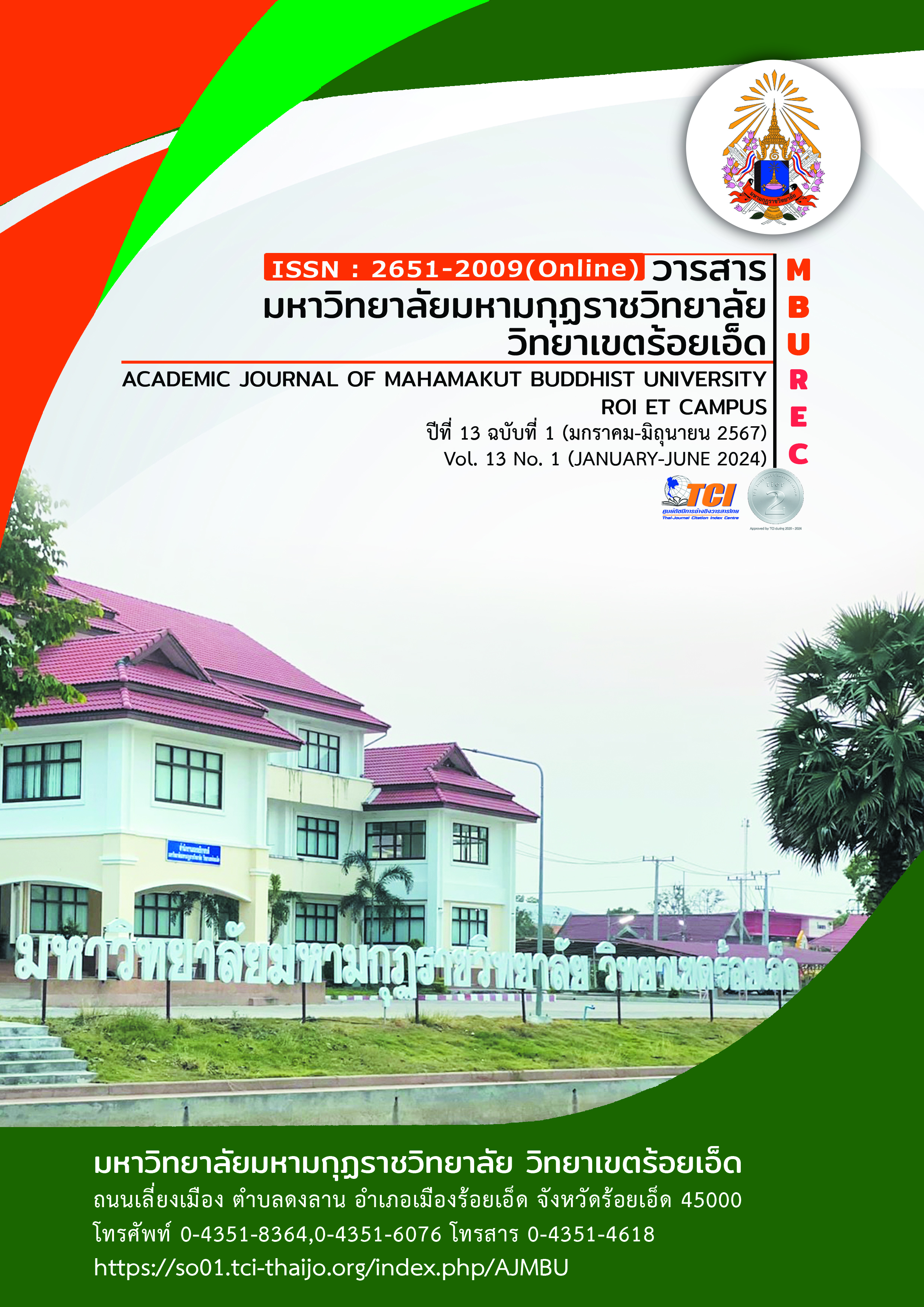VIRTUAL TECHNOLOGY THAT WILL INFLUENCE THE THAI TOURISM BUSINESS IN THE FUTURE
Main Article Content
Abstract
The objectives of this research article are (1) to study perceptions influencing virtual reality technology (2) to study virtual reality technology influencing Thailand's tourism business in the future. The population used in this research is Thai tourists. The sample group was determined according to the concept of Sumacker and Lomax. The sample group was 400 people by simple random sampling (Simple Random) and analyzed the data by descriptive statistics such as frequency, mean, standard deviation. and test the hypothesis with statistics Multiple regression analysis.
The results showed that 1. Perception that influenced virtual reality technology was at a high level, found that 81.4 percent (R2 = 0.814) was statistically significant (p value = <0.000). 2. Virtual reality technology that will influence the Thai tourism business in the future was found at 87.4 percent (R2 = 0.874) with statistical significance (p value = <0.000). From this research, it helps to know the application of virtual reality technology to tourist attractions by doing research by making users feel like they are in real tourist attractions and able to interact with tourist attractions.
Article Details

This work is licensed under a Creative Commons Attribution-NonCommercial-NoDerivatives 4.0 International License.
References
ไพฑูรย์ โพธิสว่าง. (2556). การทำวิจัยทางสังคมศาสตร์ หลักการ วิธีปฏิบัติ สถิติ และคอมพิวเตอร์ (E-book). ชลบุรี : ฝ่ายนวัตกรรมการเรียนการสอน สำนักคอมพิวเตอร์ มหาวิทยาลัยบูรพา.
กัลยา วานิชย์บัญชา. (2549). สถิติสำหรับงานวิจัย. พิมพ์ครั้งที่ 2. สำนักงานพิมพ์จุฬาลงกรณ์มหาวิทยาลัย.
ดลพร ศรีฟ้า. (2563). การเดินทางข้ามกาลเวลาผ่านความจริงเสมือนในพิพิธภัณฑ์แห่งชาติฟินแลนด์. วารสารเทคโนโลยีสื่อสารมวลชน มทร. พระนคร. 5(2). 99-107.
สถาบันอนาคตไทยศึกษา. (2564). Virtual Reality (VR) กับการท่องเที่ยวแห่งอนาคต. สืบค้นเมื่อ 23 เมษายน 2565. จาก https://www.thailandfuture.org/post/virtual-reality-vr-%E0%B8%81-%E0%B8%9A%E0%B8%81%E0%B8%B2%E0%B8%A3%E0% B8%97-%E0%B8%AD%E0%B8%87%E0%B9%80%E0%B8%97-%E0%B8% A2%E0%B8%A7%E0%B9%81%E0%B8%AB-%E0%B8%87%E0%B8% AD%E0%B8%99%E0%B8%B2%E0%B8%84%E0%B8%95
Hong, W., Thong, J.Y.L., Chasalow, L.C. and Dhillon, G. (2011). User Acceptance of Agile Information Systems: A Model and Empirical Test. Journal of Management Information Systems. 28(1). 235-272.
Israel, K., Zerres, C., & Tscheulin, D. K. (2023). Virtual Reality-Substitute for a Real Experience? The Role of User Motivation, Expectations and Experience Type. International Journal of Innovation and Technology Management. 20(03). 2350018-1-2350018-30.
Kamarulzaman Ab. Aziz, & Tan Gek Siang. (2014). Virtual reality and augmented reality combination as a holistic application for heritage preservation in the UNESCO world heritage site of Melaka. International. Journal of Social Science and Humanity. 4(5). 333-338.
Kampliw, S., & Monthatong, M. (2019). Loop mediated isothermal amplification (LAMP) for Nosema bombycis diagnosis by small subunit ribosomal RNA (SSU rRNA) gene. Indian Journal of Agricultural Research. 53(4). 447-452.
Quick ERP. (2023). VR คืออะไร สิ่งที่ควรรู้ และนวัตกรรมที่ไม่ควรพลาด. สืบค้นเมื่อ 31 มีนาคม 2566. จาก https://quickerpthailand.com/blog-2023-what-is-vr/
Srifar, D. (2020). Virtual reality for tourism promoting of koh pha-ngan. Rajamangala Bangkok : University of Technology Phra Nakhon.


